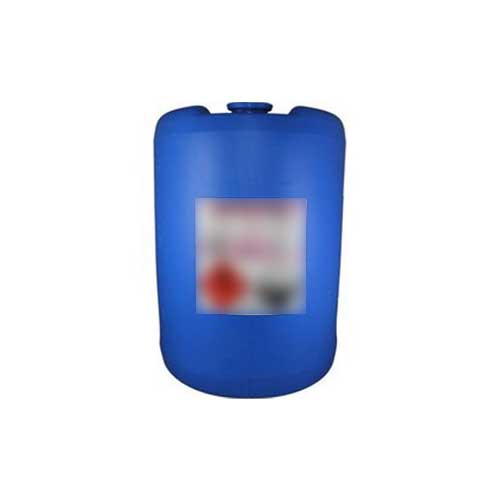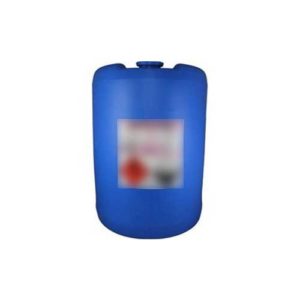ACETIC ACID (CH3COOH)
ABOUT:
The word ‘acetic’ is derived from a Latin word called ‘acetum’ meaning ‘vinegar’. In the food industry, it is obtained in the process of acetic fermentation of ethanol, i.e. in the process of alcoholic fermentation. Vinegar is the dilute form of acetic acid and is the most common chemical substance among people. Acetic acid is the second simplest carboxylic acid after formic acid. Acetic acid is also known as ethanoic acid, ethylic acid, vinegar acid, and methane carboxylic acid.
Acetic acid is obtained by carbonylation of methanol using fossil-based CO. This involves reacting methanol with carbon monoxide in the presence of a catalyst to form acetic acid. The reaction is usually performed under high pressure and at elevated temperatures to achieve high conversion and selectivity. The resulting acetic acid can be used as a raw material in the production of various chemicals.
PHYSICAL PROPERTIES:
Appearance: colorless, transparent liquid
Odor: pungent, vinegar-like odor
Molecular weight: 60.05 g/mol
Melting point: 16.6 °C
Boiling point: 118.1 °C
Density: 1.049 g/cm3 (20 °C)
Solubility: Miscible with water and most organic solvents.
CHEMICAL PROPERTIES:
- Strong organic acid with a pH value of 4.76.
- Forms acetate salts when it reacts with bases.
- Reacts with alcohol to form esters.
- Hydrogen bonding occurs between its molecules.
- Oxidizes to CO2 and H2O in the presence of strong oxidizing agents.
- Decomposes upon heating to produce CO2 and CH3COOH.
- Highly corrosive to many metals and forms metal acetates.
APPLICATIONS:
FOOD INDUSTRY:
The food industry is probably the largest consumer of acetic acid i.e. white vinegar.
Flavour enhancement: It provides a sour taste to food products, such as pickles, sauces, and salad dressings.
Preservation: Acetic acid is used to preserve food by inhibiting the growth of harmful bacteria and yeasts, thus extending the shelf life of food products.
Food Additive: It is used as an ingredient in many food products, including ketchup, mayonnaise, and mustard.
Cleaning Agent: Acetic acid is used as a cleaning agent in food processing plants to remove grease and mineral build up.
Pickling: Acetic acid is the main ingredient in vinegar, which is commonly used for pickling vegetables, fruits, and meats. The concentration of acetic acid in pickling solution is usually 5-8%.
HOUSEHOLD PURPOSE:
Cleaning: Mixing acetic acid with water can be used as a natural cleaner for surfaces such as windows, countertops, and tile.
Cooking: Acetic acid is the primary ingredient in vinegar, and can be used for pickling, marinades, and as a condiment.
Laundry: Adding vinegar to the laundry cycle can help to remove soap residue and brighten clothes.
Gardening: Diluted acetic acid can be used as a natural herbicide.
TEXTILE INDUSTRY:
Dyeing and printing: used as a fixative for dyes and helps improve color fastness.
Sizing: helps improve the strength and handling of woven fabric during weaving.
Desizing: used to remove size from the fabric after weaving.
Scouring: helps remove impurities from natural fibres before spinning or weaving.
Finishing: used in various finishing processes, including mercerization and stone washing.
Deacidification: used to neutralize excessive alkalinity in fibres, improving stability and preventing yellowing.
CHEMICAL INDUSTRY:
Acetic acid is used in the production of
- Acetic anhydride,
- Cellulose acetate,
- Vinyl acetate monomer(VAM),
- Acetic esters.
COSMETICS INDUSTRY:
- It is used in cosmetics as an ingredient in toners, astringents, and exfoliating products. It helps to regulate skin pH, remove excess oil, and
improve skin texture. - In most cosmetics, it is used as a regulator, in some it is the “balance” of the fragrance; it can provide a balance to sweet odours.
ELECTRONIC INDUSTRY:
- It is mainly used as a cleaning agent for removing organic contaminants, such as oil, grease, and flux residue, from the surface of electronic
components and printed circuit boards. - In some specific applications, acetic acid can also be used as an etchant for metal surfaces and as a component in photoresist stripper solutions.
SAFETY MEASURES:
Personal Protective Equipment (PPE): Wear gloves, goggles, and a lab coat to protect the skin and eyes from exposure to the acid.
Ventilation: Ensure that the work area is well-ventilated to minimize the risk of inhaling vapours.
Storage: Store acetic acid in a cool, dry place, away from heat sources and incompatible chemicals. Label the container clearly and keep it tightly sealed when not in use.
Spills: In the event of a spill, evacuate the area and avoid breathing in the fumes. Wear gloves and protective clothing to clean up the spill, and neutralize the acid with a baking soda solution.
Disposal: Dispose of acetic acid properly, following local regulations for
chemical waste disposal.





Reviews
There are no reviews yet.